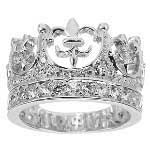Today, I followed a link to a blog that contained the most beautiful cards and great tutorials. "Wow", I thought, "I want to keep up with this blog." So I began to search the blog for contact and subscription information. Down I scrolled past all the beautiful cards, the informative instructions, and now I'm getting more excited about subscribing. Where oh where is the subscription information? Finally, at the bottom of the page in light, barely discernible, tiny letters are the words "Subscribe to: Posts (Atom)". Not only were the words tiny and at the very bottom of the page, they almost disappeared into the background color of the page.
Where Is Your Subscription and Contact Information?
Now, if you want your blog to be your own private spot to store your creations, then this type of subscription notice will work great for you because no one will ever subscribe to your blog! I wanted to subscribe, and I finally stopped trying because I couldn't spend anymore time figuring out how to do so!
So what's the lesson here? Where is your subscription and contact information on your blog? Do your viewers think your blog is a WOW? If they do, they'll want to follow you. When people follow you, it enhances your online profile. Make it easy for them by making subscription and contact information readily apparent. When viewing a page, people's eyes are naturally first drawn to the top left and bottom right. Put your subscription contact in the top left sidebar of your blog. This was a problem for the blog I was viewing because she only had a two-column blog. The first thing I would recommend to her is to change to a three-column blog. Julie Semones article on "Why a Blog" gives a link for instructions on how to do this. Be sure to read this article, which has been posted on this blog.
Do People Know Where You Live?
Today, people worry (and with good reason) about maintaining and securing information on the Internet. There was a classic exchange on the TV show "Frasier" that still makes me laugh out loud when I remember it.
Frasier and Niles Crane decided to open an exclusive restaurant. As their practical-minded father listened, the sometimes officious-sounding brothers started brainstorming:
Frasier: "We'll call it Frères Crain"
Niles: "Our phone number will be unlisted"
Frasier: "You have to have an invitation to dine there"
The conversation goes on with more ridiculous ideas about how to make the restaurant exclusive until their father finally chimes in (and this is where I ROFL)
Martin: "Maybe you can have snipers on the roof to shoot them as they come in!"
My point is, if you want your blog to attract new customers and recruits, people have to know the area where you live. Check out the left sidebar of my blog http://scrappingalong.blogspot.com. It tells people I'm located on Cape Cod. It gives them my email address AND my phone number. Sure, you'll find that information on my banner, but remember, people's eyes are drawn to the top left and bottom right of a page - not up to the top of a banner! In fact, that banner probably only gets a cursory look if it has a pleasing design. Very few people will look beyond all my scrolls and flowers to seek out my information. Even I sometimes forget it's there! To see other examples of good placement, look at Mary Fish's blog at http://www.stampinpretty.com/ and notice the placement of contact information on her site.
Tell people where you live!
You don't have to give them your street address or the combination to your safe deposit box. Just give them the general area where you operate your business. "My business is located in the San Francisco area", or "Find me on Florida's West Coast in the town of Venice."
Tell people your name!
There is nothing more frustrating to me personally as when I get a request to join the Blog Tour group, and all I find is an email address! Are you in the witness protection program? If you are unwilling to give out your first and last name, you shouldn't be in business. If you're that afraid of giving out your name, than use a pseudonym, an alias, a nom de plume, an AKA, but don't act as though your name is on a Wanted Poster!
Give them your phone number and email address:
I have what I call my "Craft Room" phone number. It is a second line in my home that I use for business. My home phone number is unlisted, and I don't give it out. I have more than one business and this line is something I've had for many years. If you don't want the expense of a second line, you can get something called "Ring Mate" which is a second number for your phone line. It isn't very expensive, and it is a good alternative to having a business line. It has a different ring than your primary line. You can give out this number instead of your home phone number. You can even list this number in the phone book and keep the other number unlisted.
I hope this article will be of value to you, and you'll find people contacting you and following your blog with these few, simple suggestions.













